What to Expect When You’re Breeding Your Dairy Goats
Here is a free Nigerian dwarf kidding calculator and a list of things you should look for and deal with during the goat breeding process.
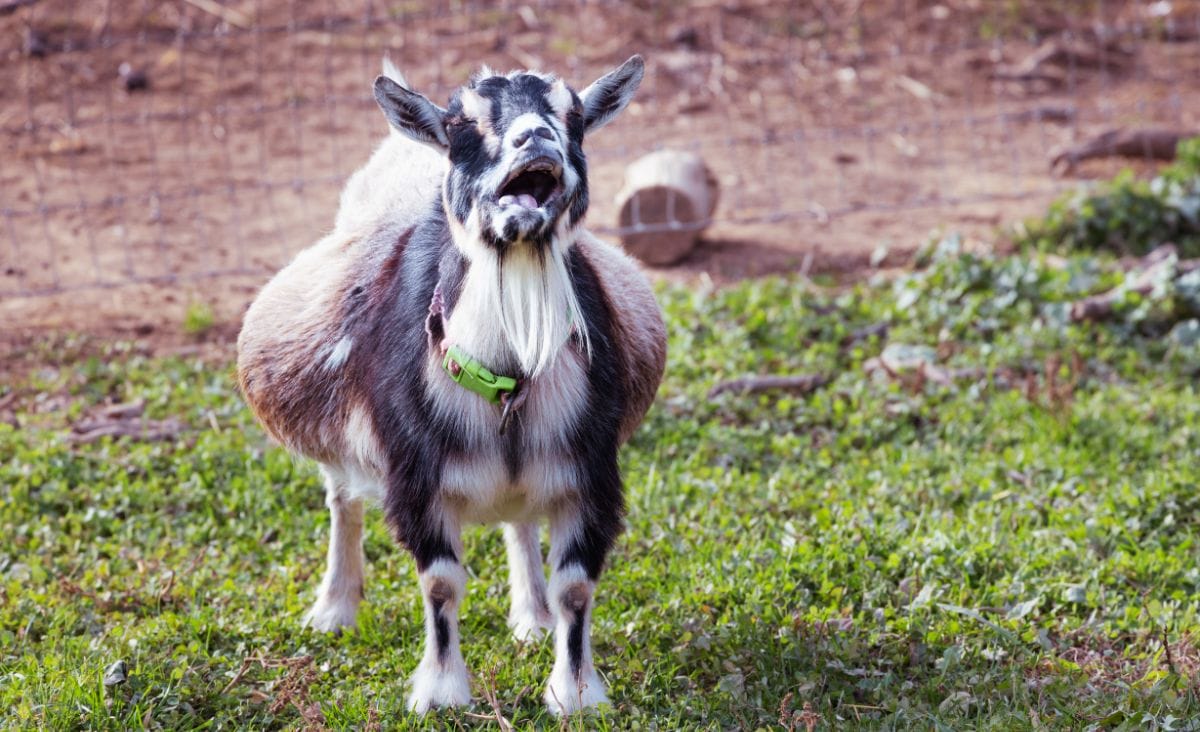
♫ It’s the most wonderful time of the year. ♪
Kidding time! For many goat owners, they don’t know exactly what to expect when their goat is pregnant. We shall commence promptly at “Hey, I think I am ready to have my doe bred” and conclude with the momentous occasion.
This is not an intensive, detailed, blow-by-blow post, but I will be linking to lots of amazing posts that will give you all that good stuff. I just want to let you know what you’re going to be looking for and dealing with throughout the breeding and goat gestation processes. This post is part one of a two part series.
Choosing Romeo: Choosing a Buck
To get started, you’ll need a buck. If you don’t have your own, you’ll need to find someone who offers stud services. Remember, when you choose a buck to service your does, keep this in mind: it costs just as much to maintain and raise a poor-quality goat as it does to raise a high-quality goat. If your does are registered, you should focus on finding a registered buck of good lines.
If you have a buck on the premises, the process is pretty simple. A boy meets a girl. He woos her with tongue flapping and bizarre sounds. It’s a real fairy tale. If you are using a stud service, you will most likely be bringing your doe to him. The problem is figuring out when to bring her to him. For that, we use a buck rag. This is basically an old piece of cloth or towel that has been rubbed all over a buck in rut and covered in his smell. Let me deviate for a moment to tell you a story with a moral…
So I visited Lone Feather Farm because I suspected one of my does was in heat. While I was there, we rubbed an old towel on one of the bucks. We kept smelling the towel to see if it was sufficiently stinky, but when you’ve been in a barn with bucks for any length of time, I guess your olfactory senses just give up. All we could smell was laundry detergent. I hoped it was good enough and dropped it in the front seat of my car on top of my fabric purse. It sat there while I chatted and visited with the goats. It sat there for the 35 minute drive home. Then I pulled my purse out, and oh my goodness! The smell was unbearable!
Lesson learned. Even if you don’t think the rag smells, put it in an airtight container.
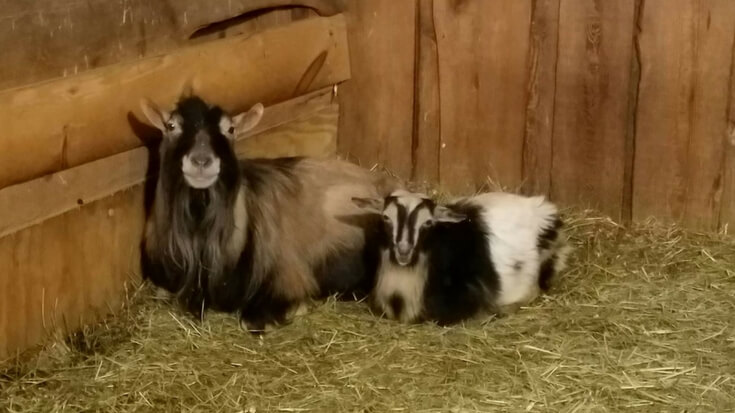
Waiting for Juliet: Is She in Heat?
So you’ve got buck smell somewhere on your homestead, be it an actual buck or your buck rag located near the ladies. How do you know when she’s in heat? The average cycle is somewhere between 17 and 25 days, with 19 days being the average. She is in standing heat (aka breedable) for only two or three of those days.
During this standing heat period, your goat may show all, some, or none of the following (some just won’t give you any tip-off):
- She may get talkative. We have one who sounds like she’s a single grain away from starvation, even if she just ate breakfast.
- She may flag or wag her tail like a little pendant. It’s similar to the flagging you see in kids as they nurse.
- She may experience personality changes. My normally irritable doe, who merely tolerates me, decided to be my new best friend out of the blue.
- She may get a sticky tail where the hair sticks together in clumps. This is thanks to vaginal discharge. If that freaks you out, you may want to stop now. It gets so much worse.
- She may produce less milk than normal.
- She may act bucky. My little doeling does this, and it’s hilarious. Look for blubbering and stomping. For more about buck behavior, check out All About Bucks in Rut.
- She may pee more often than normal.
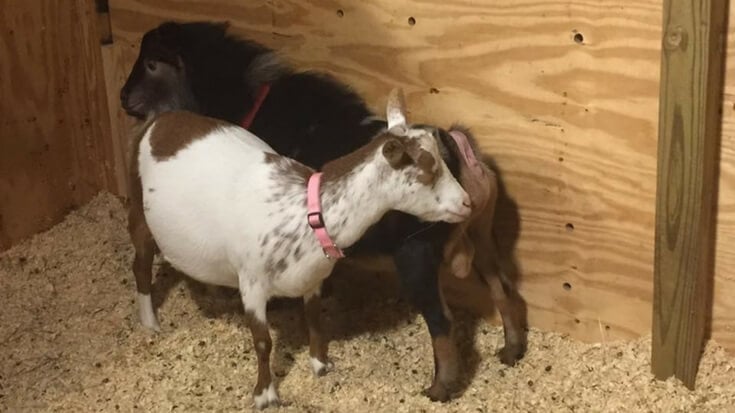
Calculating Kidding Day
If Romeo and Juliet both did their part, half the battle is done. At this point, you can wait for 30 days and do a pregnancy test, or you can wait and see what happens. There are certainly signs of pregnancy you can watch for, but most can’t be detected until right near the end, and some does never show them.
It’s important to figure out roughly when your doe should kid so you can be prepared. I have Nigerians who, like other miniature breeds, have an average gestation period of 145 days. This handy calculator calculates for 145 days. If you have a full-sized goat, you’ll need to adjust it by adding 5 days.
The Goat Kidding Calculator
This calculator will give you an approximate kidding date for your Nigerian dwarf or pygmy based on the last breeding date. Please note, the breeding date is entered in month/day/year, but the calculator gives the kidding date as day/month/year. I can’t figure out how to adjust this, so I’m learning to accept it.
Is my goat standard sized or miniature?
The following goat breeds are considered miniature and have a gestation period of 145 days.
- Nigerian Dwarf
- Pygmy
The following goat breeds are considered standard sized and have a gestation period of 150 days.
- Nubian
- Boer
- Alpine
- Saanen
- Toggenburg
- LaMancha
- Oberhasli
Early Goat Gestation Care
Early goat gestation is the first 3 1/2 months of pregnancy. During this time, their care is fairly minimal. Dry does only need hay, minerals, and clean, fresh water. If your doe is still being milked, she should continue her dairy rations. Towards the end of early gestation (approximately two months before kidding), you will want to dry off your does that are still in milk.
We also make sure at the end of early gestation to trim hooves. Some people wait until later to do this, but we prefer not to stress her out so close to kidding.
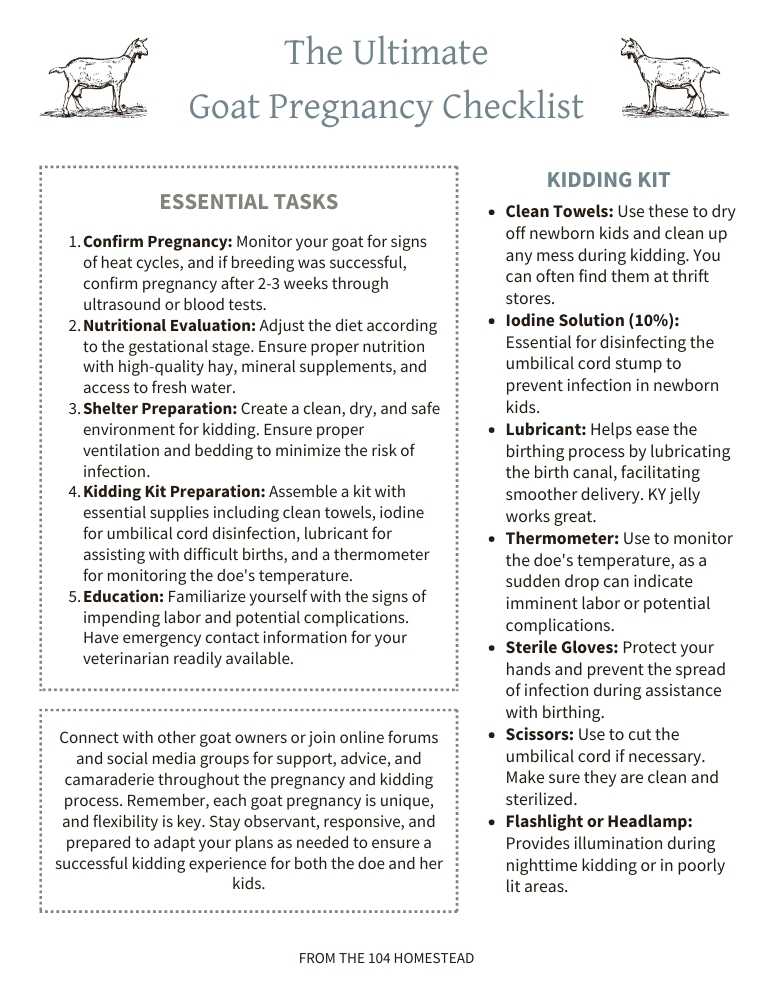
Frequently Asked Goat Breeding Questions
Continue to Part 2: Late Gestation Care & Labor
If you’ve found value in this blog post and enjoyed reading it, why not share it with your Pinterest community? Pin the image below and spread the love!
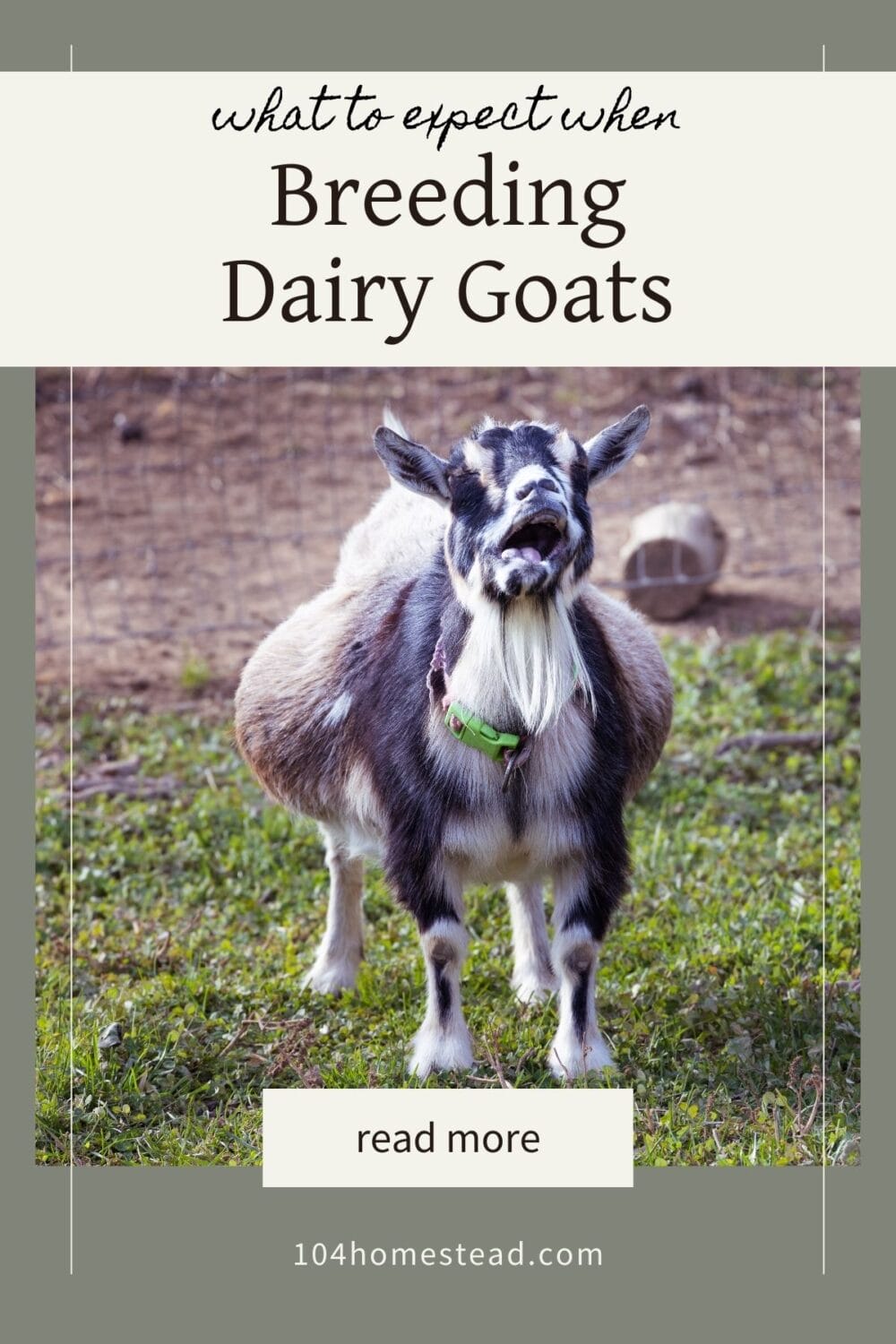
It is rewarding to breed goats, but you need to think about it and plan it out carefully. You can make sure that the breeding process goes smoothly and safely by knowing what your goats need, spotting the signs that they are ready to breed, and giving them the right care during pregnancy. Remember that the health and safety of your goats should always come first.
Have you had a unique or unexpected experience while breeding your goats? Share your stories and tips in the comments below. I’d love to hear from you!
